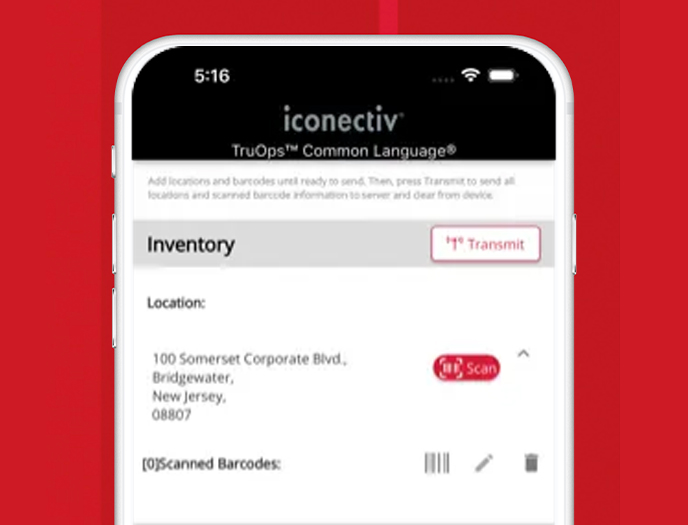standardizing data reduces operational costs by 20%
TruOps® Common Language®
Communication service providers (CSPs) are faced with reducing the estimated $65 billion wasted each year due to poor internal communications, misplaced assets and scattered data. Every company in the telecommunications ecosystem from the wireless, wireline, cable or VOIP providers to the tower and data center operators continually need to be more efficient and accelerate the deployment of services. One clear way to do that is by enabling better utilization of network assets and interconnections globally.
Common Language was designed to end that waste. By allowing information to be shared across departments and vendors, it ensures everyone works together by standardizing how systems handle equipment, locations, circuit paths and service use, promoting consistency and collaboration.
eliminating customer challenges with TruOps Common Language
lack of standardization
Companies that provide communications services struggle with inconsistent naming conventions and processes, leading to operational inefficiencies and increased costs. Common Language addresses this for all in the communications ecosystem by providing a standardized naming system across all network components, locations and connections enabling streamlined operations.
inefficient asset management
The absence of a uniform system for tracking and managing assets results in poor visibility, reduced productivity and potential financial losses. Common Language solves this by offering comprehensive asset management that standardizes and optimizes the tracking of network assets and locations supported by geographic information system (GIS) information.
overwhelming operational complexity
When companies that provide communications services expand their customer base and service offerings, their networks grow and they encounter increased operational complexity, which can result in errors, delays and increased costs. Common Language reduces this complexity by automating processes and providing clear, consistent information across systems.
how TruOps Common Language can help
- overview
- enhanced operational efficiency
- improved collaboration
- cost reduction
- data-informed decision-making
By standardizing naming conventions and automating processes, Common Language significantly reduces operational errors, optimizes resources and cuts down on operational costs.
- Offers a better way to manage capital and operational expenses and work with customers and partners
- Provides a common view across all assets to get a greater return of equipment owned
- Facilitates network insights for better, more informed investment decisions, helping to optimize network planning and expansion strategies
- Delivers real-time network utilization metrics and trends to understand what updates need to be made or what new assets need to be purchased
- Handles new business arrangements seamlessly and securely across all trading partners and vendors
The platform enables better communication and collaboration across departments, partners and vendors, leading to faster service launches and more effective partnerships.
- Simplifies managing any network function, on any type of network, from any vendor
- Allows for expansion opportunities by enabling:
- easier partnerships with other CSPs
- services to be introduce to market more quickly
- enabling customers’ services to be turned up faster
- Streamlines information sharing across business functions, partners and vendors, to reduce errors
- Standardizes the way locations are recorded to coordinate service delivery and streamline the communication of locations for equipment delivery and audit assets
By eliminating poor communication, mislaid assets and mismanaged inventory, Common Language helps in reducing unnecessary costs and improving overall profitability.
- Facilitates the automation of business processes and optimizes asset utilization to reduce costs
- Helps prevent revenue loss and customer frustration from order fallout
- Specifies the location, cost and interchangeability of equipment within the entire network and inventory to find cost-saving opportunities
- Leverages common naming definitions and attribute assignments across operational support systems (OSS) and enterprise resource planning (ERP) environments
- Enhances financial controls with more accurate and detailed asset valuation by identifying network assets to report on financial performance
- Increases control of capital expenditures and reduces operational costs of managing inventories, warranties and repairs
A suite of data visualization tools accessible via desktop or mobile devices that aid in tracking assets, network planning and field operations.
- The Common Language App simplifies the management of network equipment inventory for workers in the field
- The network view feature helps users visualize network sites in a digital map to streamline network planning and technology rollouts
- Antenna view displays antenna locations on an interactive map, enabling assessment of statuses, locations and key details for informed decision-making
- Common Language CLEI Inquiry allows users to access and analyze equipment attribute data, providing a visualization of the equipment for easier identification
- overview
- enhanced operational efficiency
- improved collaboration
- cost reduction
- data-informed decision-making

featured customers

Common Language will not only give us real-time status of our network assets but also key insights into our business performance. It will serve as a major competitive advantage as we continue to expand services for our customers across our markets.

empowering your business
operations efficiency
Operations efficiency uses precise, reliable systems to streamline billing and network planning. Leveraging proven tools helps CSPs cut costs, boost performance, and secure data.
trusted communications
Trusted communications push digital transformation, delivering secure conversational commerce that connects businesses and consumers while ensuring privacy, scalability, and agility across the value chain.
mobile management with the Common Language App
CLEI subscribers now have access to a powerful tool to help service providers manage their network equipment more effectively.
With the TruOps™ Common Language® App for iOS and Android, users can:
- scan barcodes to collect CLEI Code/Serial Number or ECI data for equipment at a particular location.
- query the real-time iconectiv CLEI repository by CLEI code, entered via scan of a barcode or manual entry to view its attribute data.
- access and download inventory files.


